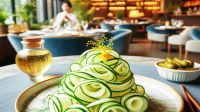THIS bijou fruit is called sawo kecik (Minalkara kauki). When getting rape, it’s reddish yellow or maroon. Judging from its shape, this sapodilla-like fruit has much smaller size than other sappodila types. When getting ripe, the skin is very thin and easily peeled off. It tastes sweet but is not as sweet as other sappodilla.
Sawo kecik can be found in tropical regions such as Asia and America. In Indonesia it can still be found around the coastal areas such as in Bali, especially in West Bali National Park. While in Java, this sawo kecik is often grown in Solo and Yogyakarta Palace.
In addition to producing sweet fruit, its wood can also be used for various purposes to make assorted handicraft works such as statues, household furniture or carpentry tools. In Bali, the sawo kecik tree is used to make carvings.
Sawo Kecik, which was formerly somewhat rare, is now easily found on the Island of Bali because local community is encouraged to plant this rare tree in the backyard and hotel gardens and garden for special collections of rare plants that can also be taken advantage for ceremonial paraphernalia.
In line with the movement of preserving rare plants, the annual Tri Hita Karana Awards and Accreditation event includes assessment criteria related to the preservation of rare plants in addition to the alignment of the broader social, spiritual and environmental aspects in which the hotel is located. Other than in the hotel area, this sawo kecik plant can be easily found in the Puputan Margarana Square at Renon, Denpasar. Its fruit will be getting ripe around May. So, if you want to witness firsthand about the elegance of this fruit directly on the tree, it can be seen around May.










